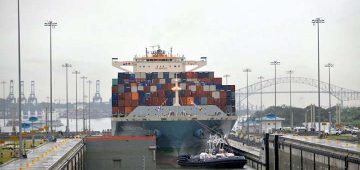SOLAS VGM, the long-awaited new regulation requiring the gross mass of a container to be verified before it is loaded onto a ship entered into force on Friday 1st July amid some confusion over how the new rule will be implemented. The new regulation, commonly referred to as the Verified Gross Mass requirement has been introduced under the International Convention for the Safety of Life at Sea (SOLAS), promising to increase safety by ensuring that the millions of containers carried on ships each year are optimally stowed.
In 2011, the International Maritime Organisation (IMO) began to develop measures to prevent the loss of containers in response to concerns of Member States and the shipping industry following a number of incidents involving loss of containers and containerships, such as the sinking of the MSC Napoli in 2007 and capsizing of the MV Deneb in 2011. The loss of the MOL Comfort in 2013, regarded as the worst containership loss in history, later underscored the seriousness of the issue. The aim of the IMO was to develop further measures to complement the existing provisions aimed at the stability and safe operation of containerships, including the safe packing, handling and transport of containers.
While there has always been a requirement to declare the gross mass of cargo and containers, the SOLAS amendment takes it a step further by requiring verification of the mass of a packed container for a true reflection the actual gross mass.
According to the amendments to SOLAS regulation VI/2, shippers can use one of two methods to verify the gross mass. Method 1 involves weighing the container using calibrated and certified equipment, a service only some of the world’s primary ports have the ability to offer presently.

However, Method 2 involves weighing all packages and cargo items, including the mass of pallets, dunnage and other securing material to be packed in the container, and adding the tare mass of the container to the sum of the single masses, using a certified method approved by the competent authority of the State in which packing of the container was completed.
One weighing procedure has involved the installation of equipment on Straddle Carriers at container ports.
One of the major sources of confusion stems from the fact that it is the shipper who must ensure that the verified gross mass of each packed container is stated in the shipping document. Under the new rule a container will not be loaded onto a ship unless the document is signed by the shipper and submitted to the master and terminal representative early enough for a stowage plan to be drawn up.
To help shippers and shipping industry organisation prepare for the new rule, the IMO has said that Administrations and port State control authorities should adopt a practical and pragmatic approach when verifying compliance during the first three months following implementation, with a view to permitting packed containers which were loaded prior to 1st July 2016 to be shipped to their final port without verified gross mass information.






Comments
Sorry, comments are closed for this item